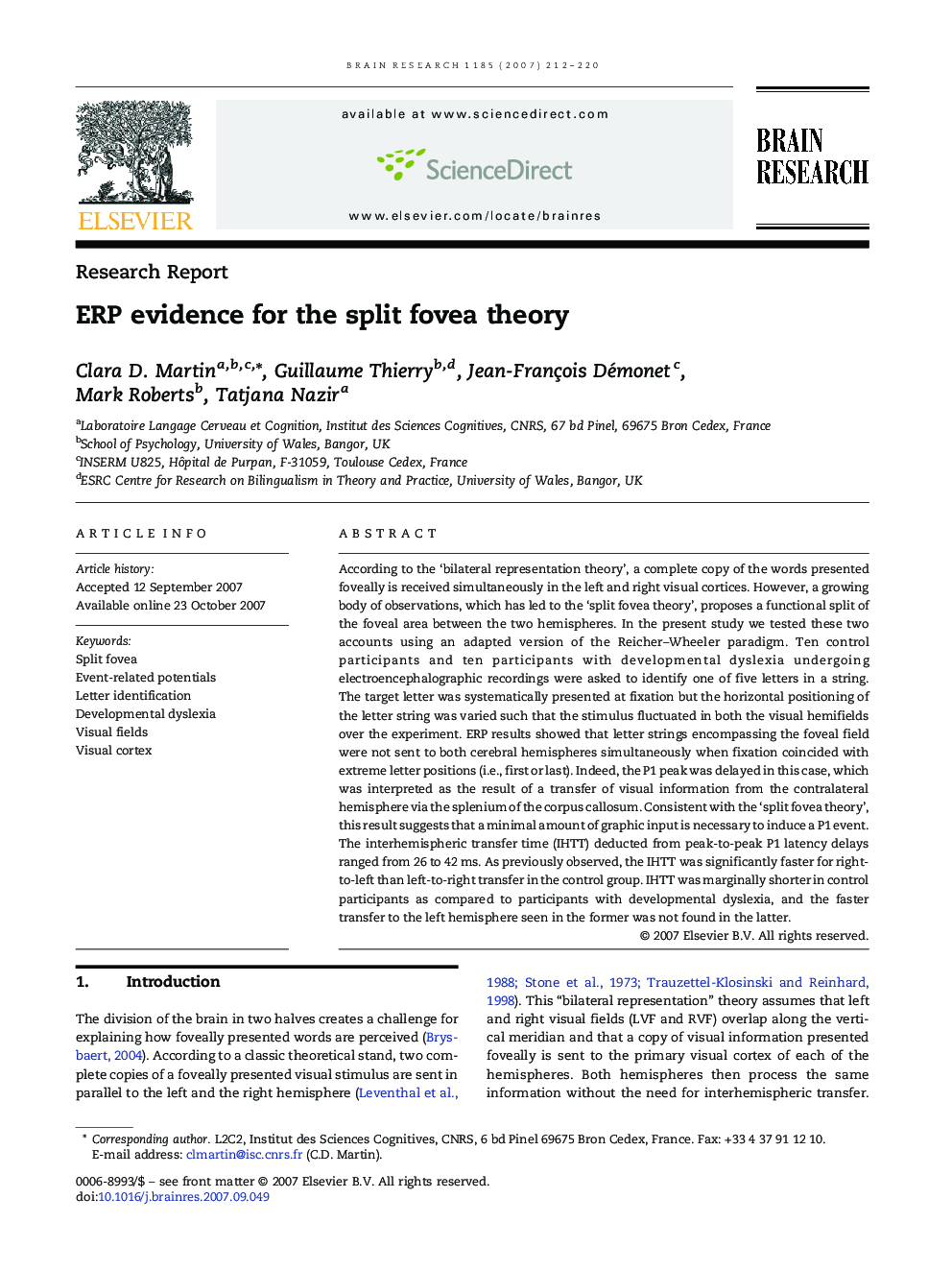| کد مقاله | کد نشریه | سال انتشار | مقاله انگلیسی | نسخه تمام متن |
|---|---|---|---|---|
| 4330240 | 1614254 | 2007 | 9 صفحه PDF | دانلود رایگان |

According to the ‘bilateral representation theory’, a complete copy of the words presented foveally is received simultaneously in the left and right visual cortices. However, a growing body of observations, which has led to the ‘split fovea theory’, proposes a functional split of the foveal area between the two hemispheres. In the present study we tested these two accounts using an adapted version of the Reicher–Wheeler paradigm. Ten control participants and ten participants with developmental dyslexia undergoing electroencephalographic recordings were asked to identify one of five letters in a string. The target letter was systematically presented at fixation but the horizontal positioning of the letter string was varied such that the stimulus fluctuated in both the visual hemifields over the experiment. ERP results showed that letter strings encompassing the foveal field were not sent to both cerebral hemispheres simultaneously when fixation coincided with extreme letter positions (i.e., first or last). Indeed, the P1 peak was delayed in this case, which was interpreted as the result of a transfer of visual information from the contralateral hemisphere via the splenium of the corpus callosum. Consistent with the ‘split fovea theory’, this result suggests that a minimal amount of graphic input is necessary to induce a P1 event. The interhemispheric transfer time (IHTT) deducted from peak-to-peak P1 latency delays ranged from 26 to 42 ms. As previously observed, the IHTT was significantly faster for right-to-left than left-to-right transfer in the control group. IHTT was marginally shorter in control participants as compared to participants with developmental dyslexia, and the faster transfer to the left hemisphere seen in the former was not found in the latter.
Journal: Brain Research - Volume 1185, 14 December 2007, Pages 212–220